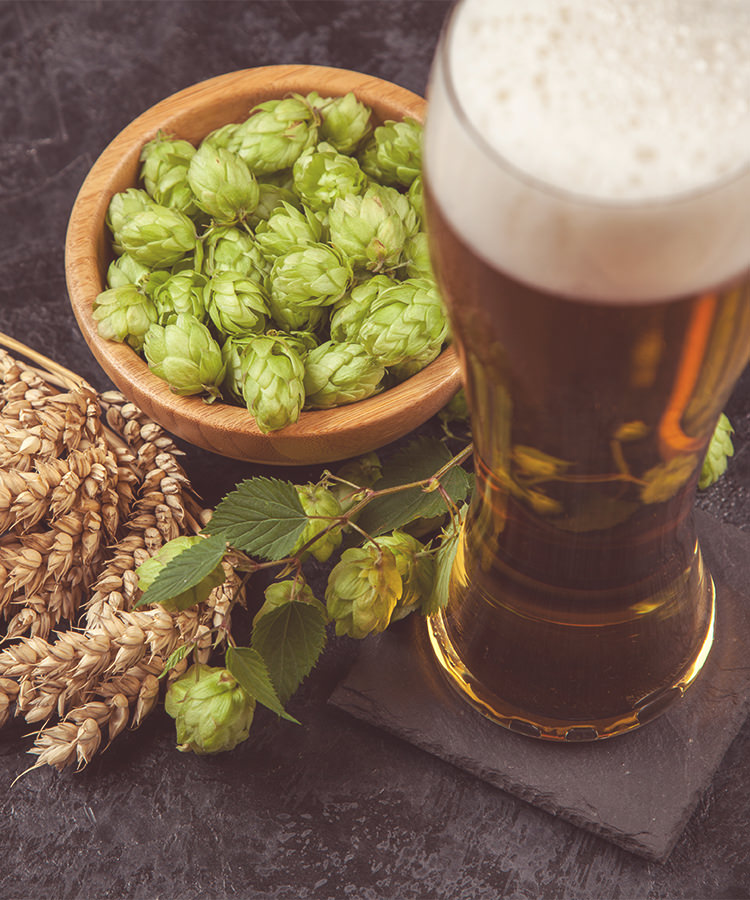If you’ve purchased a beer in the last five years, there’s a very high likelihood that you’ve come across an IPA. It seems like every craft brewery has a flagship IPA in its lineup, and beer store shelves are crammed with beers with pictures of hops on the label.
Yet despite its prevalence, you might still have some questions about the most popular style of craft beer. Here’s everything you’ve wanted to know about IPA but were too afraid to ask.
What does IPA stand for?
IPA stands for India Pale Ale. As the story goes, the drink earned its name during the British colonial era. It was too hot and humid to brew beer in India, but the British sailors still needed a drink. So they devised a heavily hopped beer (hops are a preservative) that could survive the months-long journey from the British Isles to India. The first recorded instance of an IPA being used to describe a beer was in an 1829 advertisement in the Sydney Gazette and New South Wales Advertiser.
The style has evolved far from its roots in terms of taste — hello, American IPA — but it kept the name.
What is IBU?
IPAs are full of three-letter abbreviations, and IBU should be one you check regularly. It stands for “International Bittering Units.” The IBU measures the parts per million of isohumulone (the acid in hops), and the higher the IBU, the more bitter the beer. The average IPA will be between 40 and 60 IBUs.
How quickly do IPAs go bad?
IPAs may have initially had hops added for preservation, but the beer can go stale. The beer won’t go “bad,” as in it’s not safe to drink, but it will lose many of the flavors and aromas the brewer intended the beer to have. For optimum flavor, you should drink an IPA within three weeks from its production date.
Why is IPA so popular?
Why does anything get popular? IPAs are full of flavor and they’re the polar opposite of the bland adjunct lagers Americans were used to drinking prior to the craft beer boom. Early craft brewers capitalized on this otherness. Craft breweries all started putting out an IPA, and IPAs became synonymous with the craft beer movement. As craft beer became more popular, IPAs became more popular.
Why are IPAs so bitter?
The bitterness comes from the hops, measured by IBU.
What are some other beer styles like IPA?
There will always be another IPA for you to try, but if you’re looking for something slightly different, try a pale ale. It’s slightly less intense than an IPA, but a good pale ale will hit on all the right notes. You can also look for hoppy versions of other light styles, like the PC Pils by Founders, or Hopscape from Sam Adams.
What is a double or triple IPA?
A double IPA is to an IPA what an IPA is to a pale ale. It’s a turned-up version with more hops and (usually) higher alcohol. It’s also known as an Imperial IPA.
What’s the difference between an East Coast IPA, a New England IPA, and a West Coast IPA?
Not all IPAs are created equal. Within the general “American IPA” category are three different styles. A West Coast style is aggressively hoppy and bitter with notes of citrus and pine. East Coast IPAs have strong hops, but also a strong, slightly sweet malt character that balances the beer out. New England IPAs are defined by huge fruity hop flavors. They’re also hazy and unfiltered.
Why is everyone putting fruit in their IPA?
Fruit flavors in IPA came into vogue with Grapefruit Sculpin from Ballast Point. Now seeing a fruit IPA is nothing shocking. It’s a way for craft brewers to sell their products to more than just hop heads — and they taste pretty good on a hot summer day.
What’s the difference between a pale ale and an IPA?
An IPA is a hopped up, stronger pale ale. It’s not a hard and fast definition, though. As IPAs have become stronger and hoppier, so have pale ales.
Is Sierra Nevada Pale Ale an IPA?
Sierra Nevada’s flagship Pale Ale is a craft beer staple. It’s also not an IPA; it’s a pale ale — American style. At 38 IBU, it has nearly the bitterness of your average IPA. But if the brewery decides to call it a pale ale, that’s what it is. Sierra Nevada’s Torpedo Extra IPA, for comparison, sits at 65 IBU.
